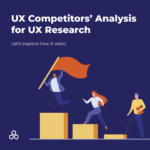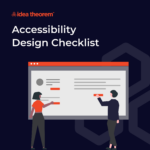Development & Engineering
Shaping Tomorrow: The Most Exciting IT Innovations of 2025 and Game-Changing Technologies for 2026
30 SEP 2025
7 mins read


The technology landscape is in a constant state of flux, with each year bringing new tools and paradigm shifts that reshape industries. As we move through 2025, several key trends have solidified their importance, moving from experimental concepts to practical applications. These advancements in artificial intelligence, computing infrastructure, and security are not just changing how businesses operate—they are redefining what is possible.
This post will explore the most significant IT technology trends of 2025, examining their real-world impact across major sectors. We will then look ahead, offering a forecast for how these technologies will evolve in 2026 and what new developments might be on the horizon.
The Dominant IT Trends of 2025
This year has been defined by the maturation of several powerful technologies. They are no longer isolated innovations but interconnected forces driving widespread digital transformation.
1. Pervasive AI and Generative Intelligence
Artificial intelligence, particularly generative AI, has moved beyond a buzzword to become a fundamental business tool. In 2025, the focus has shifted from simple chatbots to sophisticated, multi-modal systems that understand and generate text, images, code, and complex data. These AI models are being integrated directly into enterprise workflows, automating tasks that once required significant human effort.
Real-World Examples:
- Healthcare: AI-powered diagnostic tools are analyzing medical images like X-rays and MRIs with greater speed and accuracy than ever before, helping radiologists detect diseases earlier. AI is also personalizing treatment plans by analyzing a patient’s genetic data and medical history.
- Finance: Financial institutions use generative AI to create detailed market analysis reports, summarize earnings calls, and detect fraudulent transactions in real-time by identifying unusual patterns.
- Retail: Brands are using AI to generate hyper-personalized marketing copy, product descriptions, and even visual content for ad campaigns. AI-driven recommendation engines have become so advanced that they can predict customer needs before the customer is even aware of them.
2. The Rise of Edge Computing
While cloud computing remains dominant, edge computing has emerged as a critical partner. Edge computing involves processing data closer to where it is generated, rather than sending it to a centralized cloud. This reduces latency, saves bandwidth, and enables real-time decision-making. In 2025, the proliferation of Internet of Things (IoT) devices has made edge computing a necessity.
Real-World Examples:
- Healthcare: Wearable health monitors (like smartwatches) use edge computing to process vital signs locally. They can immediately alert a user or medical professional to an issue like an irregular heartbeat without waiting for data to travel to a cloud server and back.
- Retail: Smart stores use edge computing to power real-time inventory tracking and cashierless checkout systems. Cameras and sensors process shopper activity on-site, updating inventory levels and charging customers automatically as they leave the store.
- Manufacturing: In smart factories, edge devices on machinery predict maintenance needs by analyzing operational data in real time, preventing costly downtime.
3. Practical Quantum Computing Steps
Quantum computing is still in its early stages, but 2025 has marked a turning point from purely theoretical research to practical, albeit limited, applications. Companies are now using quantum-inspired algorithms and accessing early-stage quantum computers through the cloud to solve specific, complex problems that are impossible for classical computers to handle.
Real-World Examples:
- Finance: Investment firms are experimenting with quantum algorithms to optimize financial modeling and risk assessment for their portfolios, running complex simulations that account for countless market variables.
- Healthcare: Pharmaceutical companies are using quantum computing to simulate molecular interactions. This accelerates drug discovery and the development of new materials by predicting how different compounds will behave.
4. Proactive Cybersecurity with a Zero-Trust Model
As digital systems become more complex, so do security threats. The prevailing trend in 2025 is a shift away from reactive defense toward proactive, predictive security. The key part of this approach is the “Zero Trust” architecture. It works on the idea of “never trust, always verify.” Every access request is rigorously authenticated, regardless of whether it originates from inside or outside the network.
Real-World Examples:
- Finance: Banks have implemented Zero Trust frameworks to protect sensitive customer data. An employee using a company laptop at the bank’s headquarters must still complete multi-factor authentication. They can only access the specific data needed for their job.
- Retail: E-commerce platforms use AI to predict and stop phishing attacks and bot fraud. This helps protect customers before any harm is done.
Forecast for 2026: Evolution and Emergence
Looking ahead to 2026, we can expect the trends of 2025 to evolve in significant ways. We will also see new trends emerge as technology continues its relentless march forward.
The Evolution of 2025’s Trends
- AI Becomes Autonomous: In 2026, we will see the rise of autonomous AI agents. These will be AI systems capable of performing complex, multi-step tasks with minimal human intervention. For example, an AI agent could be tasked with “launching a marketing campaign for a new product,” and it would proceed to conduct market research, generate ad copy and visuals, allocate budget to different platforms, and monitor performance, making adjustments in real time.
- Edge and AI Converge (Edge AI): The relationship between edge and AI will deepen. More devices will come equipped with specialized AI chips, allowing for sophisticated AI processing directly on the device. This “Edge AI” will enable smarter autonomous vehicles, more responsive robots in manufacturing, and truly intelligent home assistants that don’t rely on the cloud for every command.
- Quantum’s Widening Impact: While we won’t have mainstream quantum computers on our desks, we will see a broader range of industries leveraging quantum-as-a-service platforms. The focus will expand beyond finance and healthcare into logistics, where quantum optimization will solve complex routing problems for global shipping companies, and into energy, where it will help create more efficient power grids.
- Cybersecurity Becomes AI-Driven: The cat-and-mouse game between attackers and defenders will escalate. In 2026, cybersecurity platforms will be almost entirely AI-driven. These systems will not only predict and block threats but also automatically remediate them, patching vulnerabilities and isolating compromised systems without human input.
New Trends on the Horizon for 2026
- Digital Twin of the Organization (DTO): The concept of a digital twin—a virtual replica of a physical object—will expand to entire organizations. A DTO will be a dynamic virtual model of a company’s operations, processes, and systems. Leaders will use it to simulate the impact of business decisions, such as restructuring a department or entering a new market, before committing to them in the real world.
- The Immersive Internet (Spatial Web): Building on advancements in VR/AR, the internet will start to become more spatial and immersive. This goes beyond virtual meetings to include persistent, shared virtual spaces for work, commerce, and socializing. In 2026, we will see more companies building immersive storefronts and collaborative workspaces that employees can access from anywhere.
- Green Technology and Sustainable Computing: With growing concerns about the environmental impact of data centers and AI models, sustainability will become a primary driver of IT innovation. In 2026, companies will face increasing pressure to adopt “green tech.” This will lead to better energy-efficient processors. It will also create AI algorithms that use less power. Data centers will run on renewable energy.
A Future Built on Intelligence and Integration
The trajectory from 2025 to 2026 is clear: technology is becoming more intelligent, more distributed, and more deeply integrated into every facet of our lives. The trends of 2025 laid the groundwork by making AI, edge computing, and proactive security accessible and practical. The forecast for 2026 points to a future where these technologies become autonomous, predictive, and immersive.
For businesses and individuals, the key to facing the future is not just using new technologies. It is also important to understand how they connect. The most significant breakthroughs will happen at the intersection of AI, edge computing, and cybersecurity. Staying informed and adaptable will be the most critical skill for thriving in this ever-evolving digital world.





